August 11, 2012
Last spring we prepared a vineyard site, put up a deer fence, and planted 40 grape vines along with some raspberries, blackberries, and asparagus. Since then the grapes have done well, although some of them were injured by late spring frosts this year. Here’s a pair of photos showing how it looked in the spring of last year just after we had cleared and mulched it, and how it looks now:
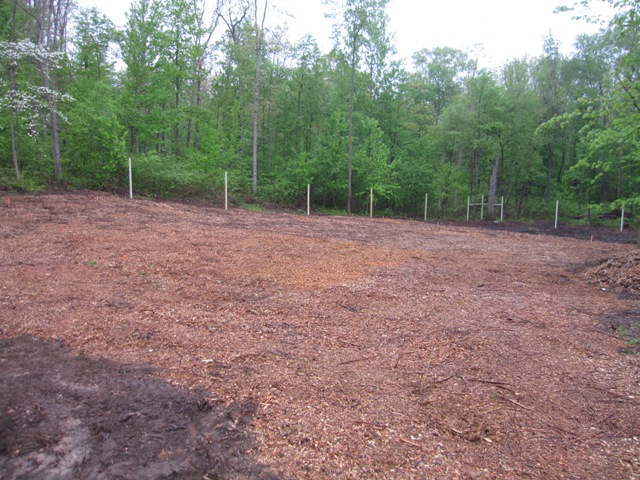
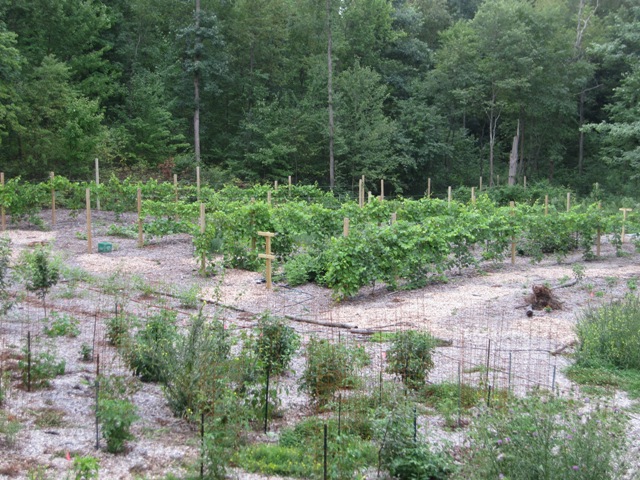
Here’s a closer view of the four rows of grape vines, with other berries and asparagus planted in the rows between. The second photo is taken from the southeast corner looking back toward the house.
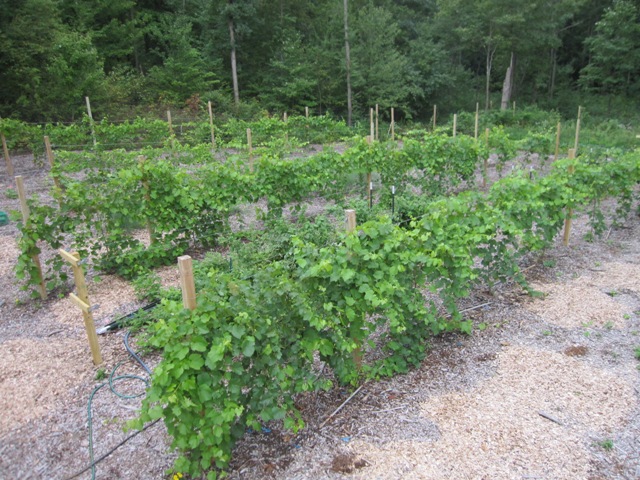
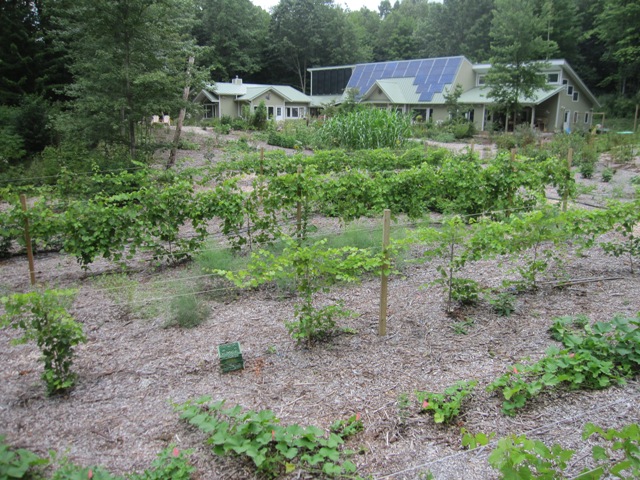
Most of the vines did very well, and the photos below show Leon Millot and Frontenac vines with canes trained along the trellis wires.
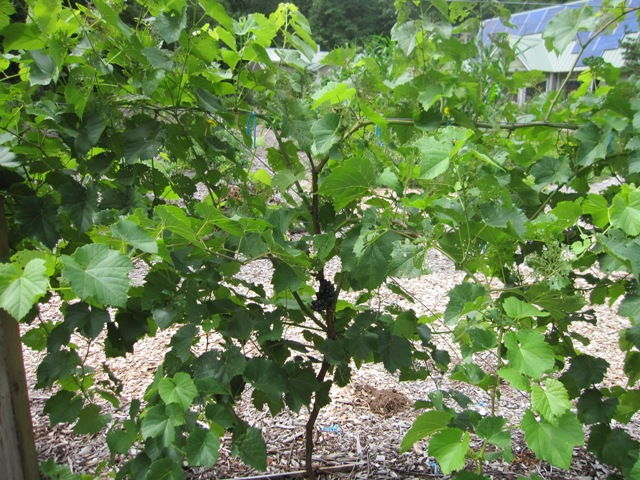
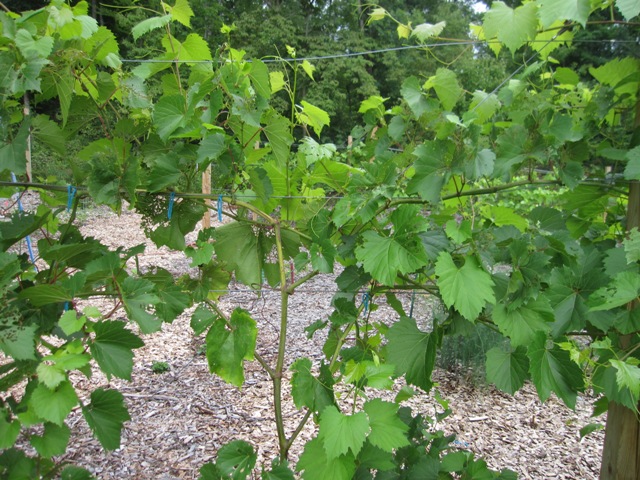
Grapes are not expected to produce a crop until their third year, and it is generally recommended to prune off all the flower clusters to keep them from setting any fruit while they are still getting established. But we did let a few of the more vigorous vines set one cluster of grapes each, just enough for a taste and not enough to unduly stress the young vines. The first photo below shows a cluster of Marquette wine grapes, and the second shows seedless Reliance grapes that will turn pink as they ripen.
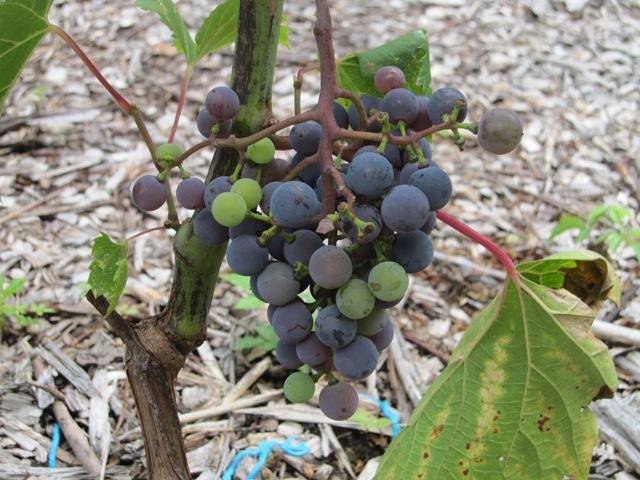
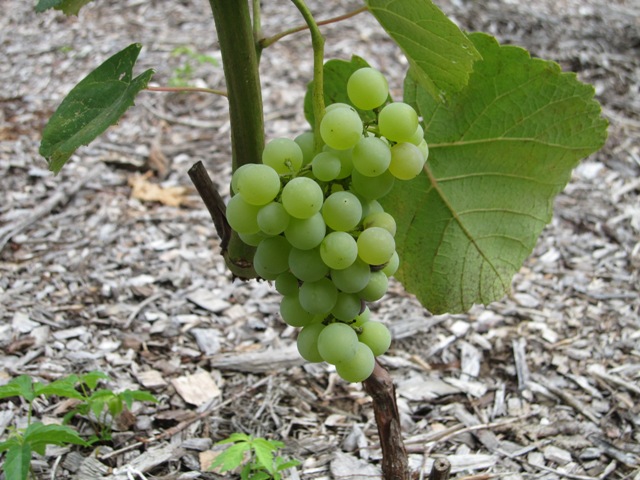
Next year we can expect a moderate crop of perhaps 5 pounds per vine for those that are doing well, but less for those that are slow to establish or were injured by the spring frosts this year and are still recovering. That should be enough for a couple of 5-gallon batches of wine next year, and several times as much once the vines are mature. In the mean time we are practicing our winemaking skills using grapes of the same varieties we’re growing (Leon Millot, Marquette, Frontenac, Frontenac gris) that we purchased from Taylor Ridge Vineyard, so that we’ll have some experience by the time our own grapes are ready.